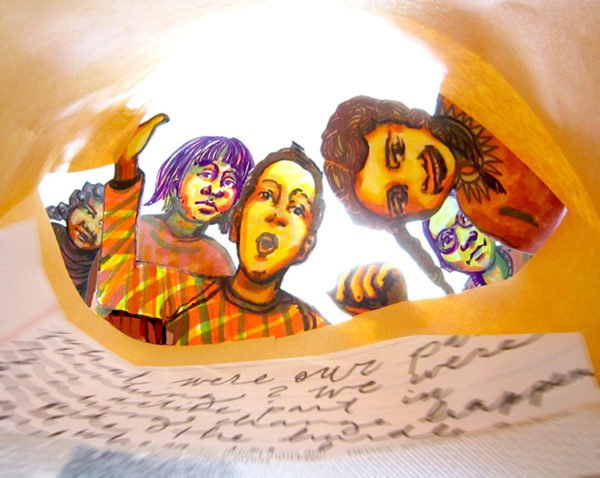Our Grandparents’ Civil Rights Era
Family letters bring history to life
By Willow McCormick
Illustrator: Bec Young
“1955? I bet my great-great-grandmother was alive then! Maybe she knew Rosa Parks!”
We were reading Nikki Giovanni’s Rosa, a powerful and nuanced account of the Montgomery bus boycott. To a 7-year-old, anything that happened more than four months ago was a long time ago; events that took place before they were born are ancient history. 1955 may as well be 1855. My students, predominantly white and attending a well-to-do suburban school, were categorizing the Civil Rights Movement along with the extinction of dinosaurs and the Time Before Television.
I marked the page with my finger and rested the book in my lap. “1955 wasn’t that long ago, you know. Your grandparents were alive then—some of your aunts and uncles were little babies at the time!” The kids looked at each other with wonder or skepticism, some doing calculations to confirm my assertion. “My mom is 40! That means she was born in . . . 1971! And I think my grandma is 70-something. Whoa!”
Listening to them marvel, seeing them orient themselves suddenly on a timeline that stretched between generations, inspiration struck. “You know,” I said, “we could write letters to our grandparents, asking them to share their memories of the Civil Rights Movement.” If the children could connect their learning in the classroom to their lives outside of school, and see that the Civil Rights Movement’s crescendo wasn’t so long ago, they might begin to better understand the continuing reverberations, the work that remains to be done.
We had been reading books about civil rights for weeks—Rosa, of course, and also Martin’s Big Words and My Brother Martin. These focus on Martin Luther King Jr. and detail some of the major tenets of the movement in kid-friendly language. Through My Eyes: Ruby Bridges gives good background and insight into the now-famous little girl’s experience integrating a primary school in New Orleans. My favorite books are the ones that take the spotlight off the famous leaders and turn it toward the many courageous young activists: Freedom Summer and Sit-In: How Four Friends Stood Up by Sitting Down tell small stories of young people standing up for themselves and each other. As my students listened to the stories and studied the pictures, I asked what they would have done in those circumstances.

